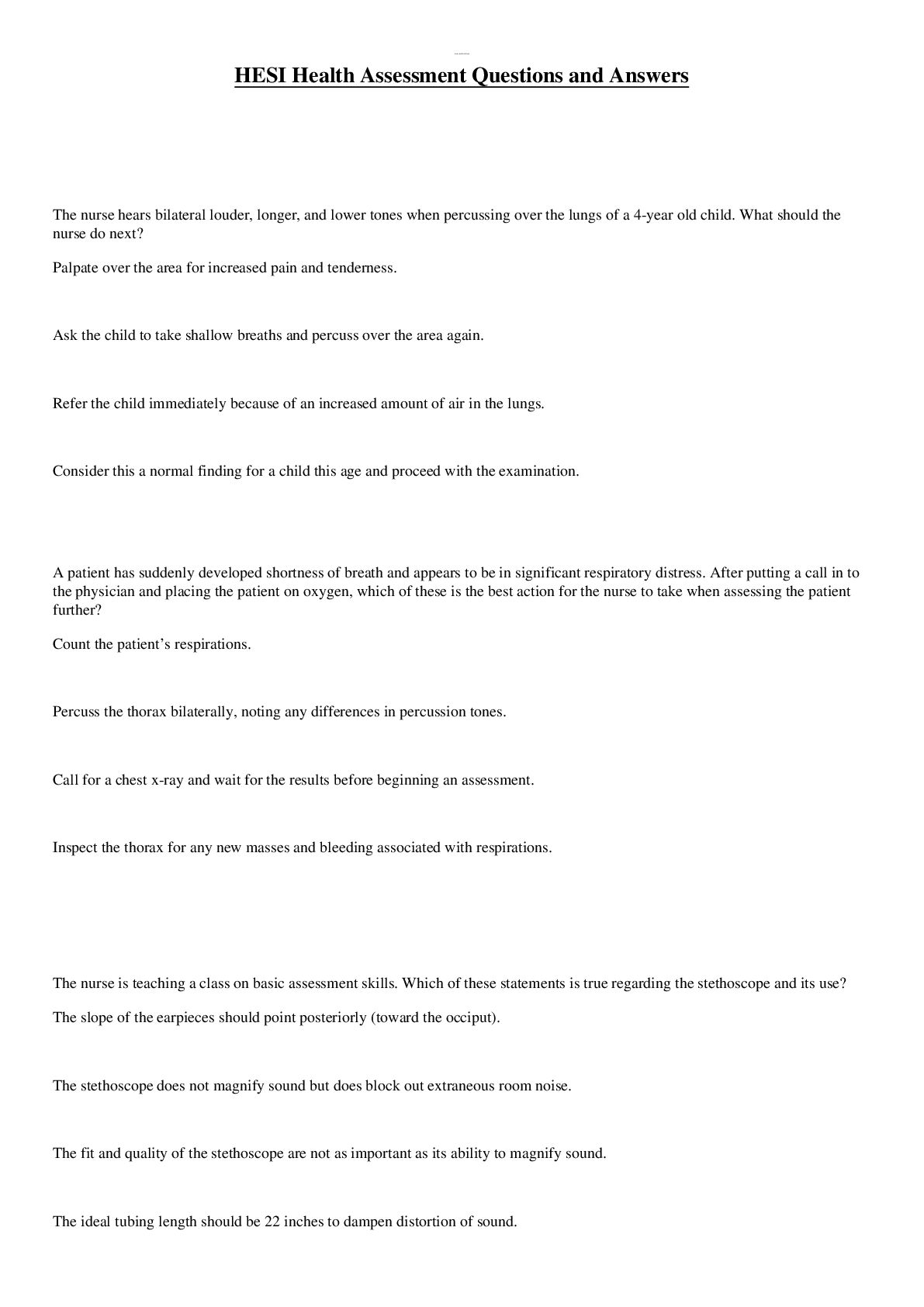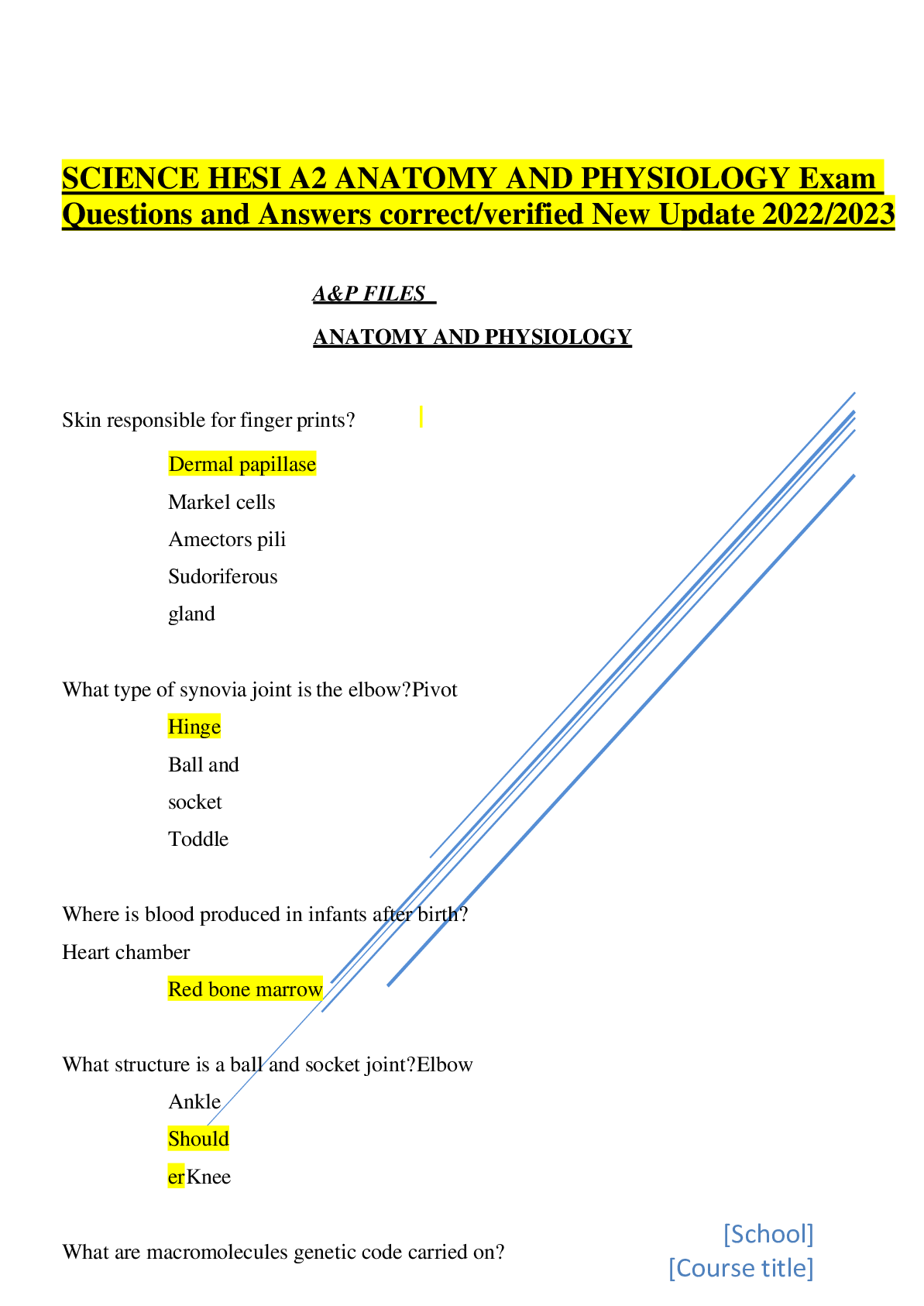Dermatology > HESI > CHAMBERLAIN COLLEGE OF NURSING NR 602 DERMATOLOGY QBANK QUESTIONS AND ANSWERS WITH EXPLANATIONS (All)
CHAMBERLAIN COLLEGE OF NURSING NR 602 DERMATOLOGY QBANK QUESTIONS AND ANSWERS WITH EXPLANATIONS
Document Content and Description Below
CHAMBERLAIN COLLEGE OF NURSING NR 602 DERMATOLOGY QBANK QUESTIONS AND ANSWERS WITH EXPLANATIONS A microscopic examination of the sample taken from a skin lesion indicates hyphae. What type of infect... ion might this indicate? (Fungal) Under microscopic exam, hyphae are long, thin and branching and indicate dermatophytic infections. Hyphae are typical in tinea pedis, tinea cruris, and tinea corporis. 2. A child with a sandpaper-textured rash probably has: (Strep infection) Streptococcal infections can present as a sandpaper-textured rash that initially is felt on the trunk. Rubeola, measles, produces a blanching erythematous “brick-red” maculopapular rash that begins on the back of the neck and spreads around the trunk and then extremities. Varicella infection produces the classic crops of eruptions on the trunk that spread to the face. The rash is maculopapular initially and then crusts. Roseola produces a generalized maculopapular rash preceded by 3 days of high fever. 3. A 40-year-old female patient presents to the clinic with multiple, painful reddened nodules on the anterior surface of both legs. She is concerned. These are probably associated with her history of: (ulcerative colitis) These nodules describe erythema nodosum. These are most common in women aged 15-40 years old. They are typically found in pretibial locations and can be associated with infectious agents, drugs, or systemic inflammatory disease like ulcerative colitis. They probably occur as a result of a delayed hypersensitivity reaction to antigens. It is not unusual to find polyarthralgia, fever, and/or malaise that precede or accompany the skin nodules. 4. A patient is diagnosed with tinea pedis. A microscopic examination of the sample taken from the infected area would likely demonstrate: (hyphae) Under microscopic exam, hyphae are long, thin and branching, and indicate dermatophytic infections. Hyphae are typical in tinea pedis, tinea cruris, and tinea corporis. Yeasts are usually seen in candidal infections. Cocci and rods are specific to bacterial infections. [Show More]
Last updated: 1 year ago
Preview 1 out of 13 pages
.png)
Reviews( 0 )
Document information
Connected school, study & course
About the document
Uploaded On
Jun 14, 2022
Number of pages
13
Written in
Additional information
This document has been written for:
Uploaded
Jun 14, 2022
Downloads
0
Views
54


.png)
.png)
.png)
.png)
.png)
.png)
.png)
.png)
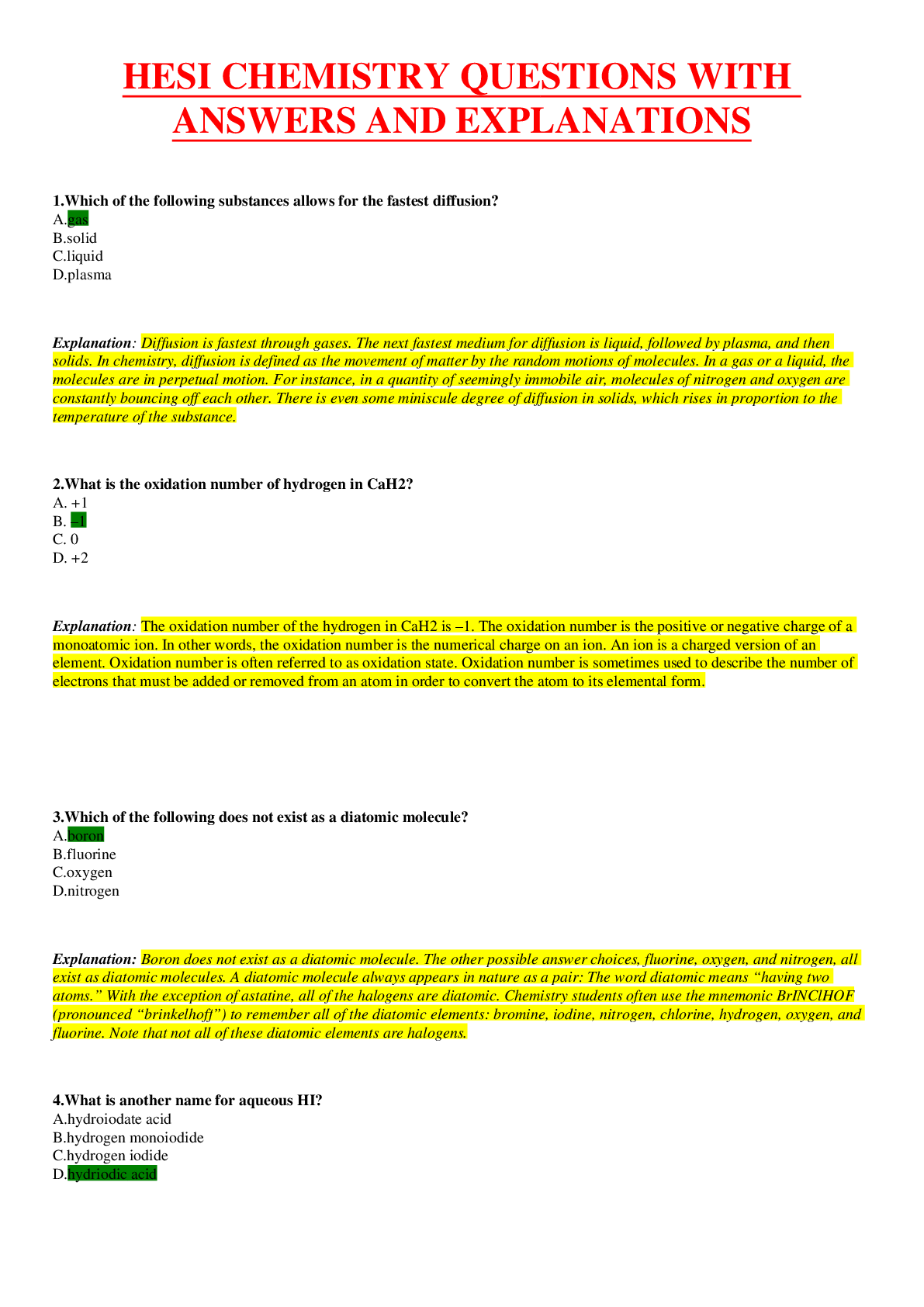
.png)
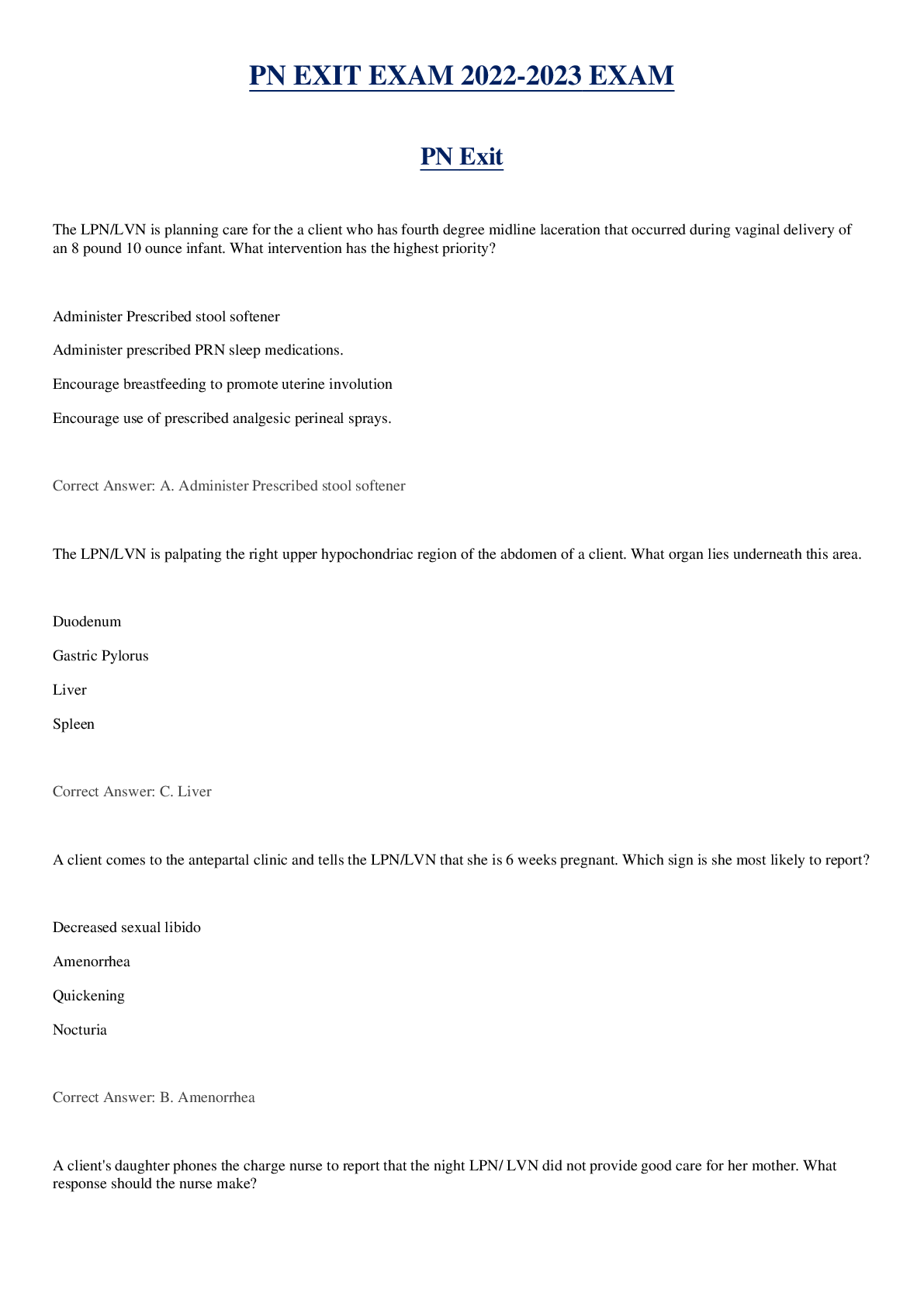
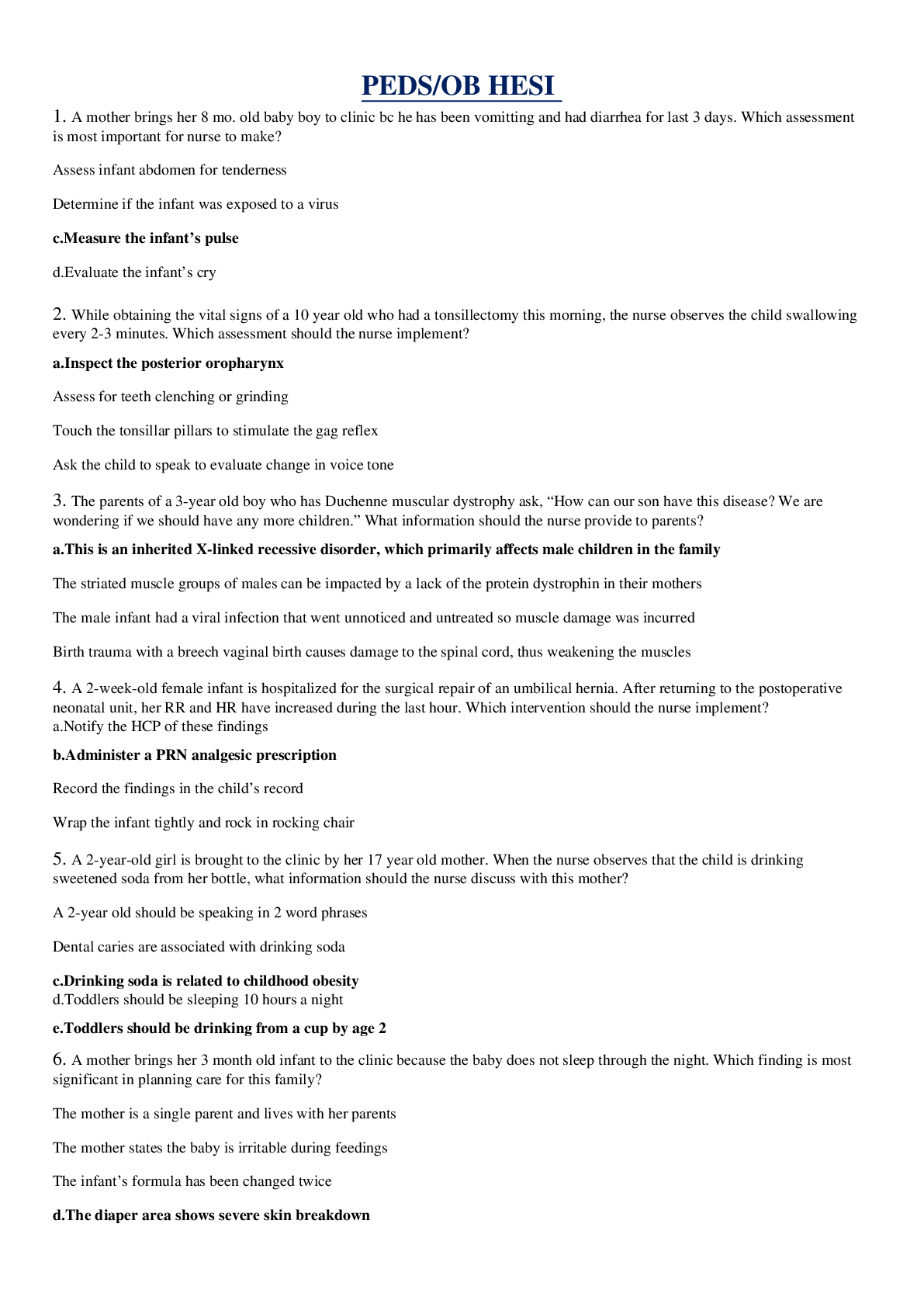
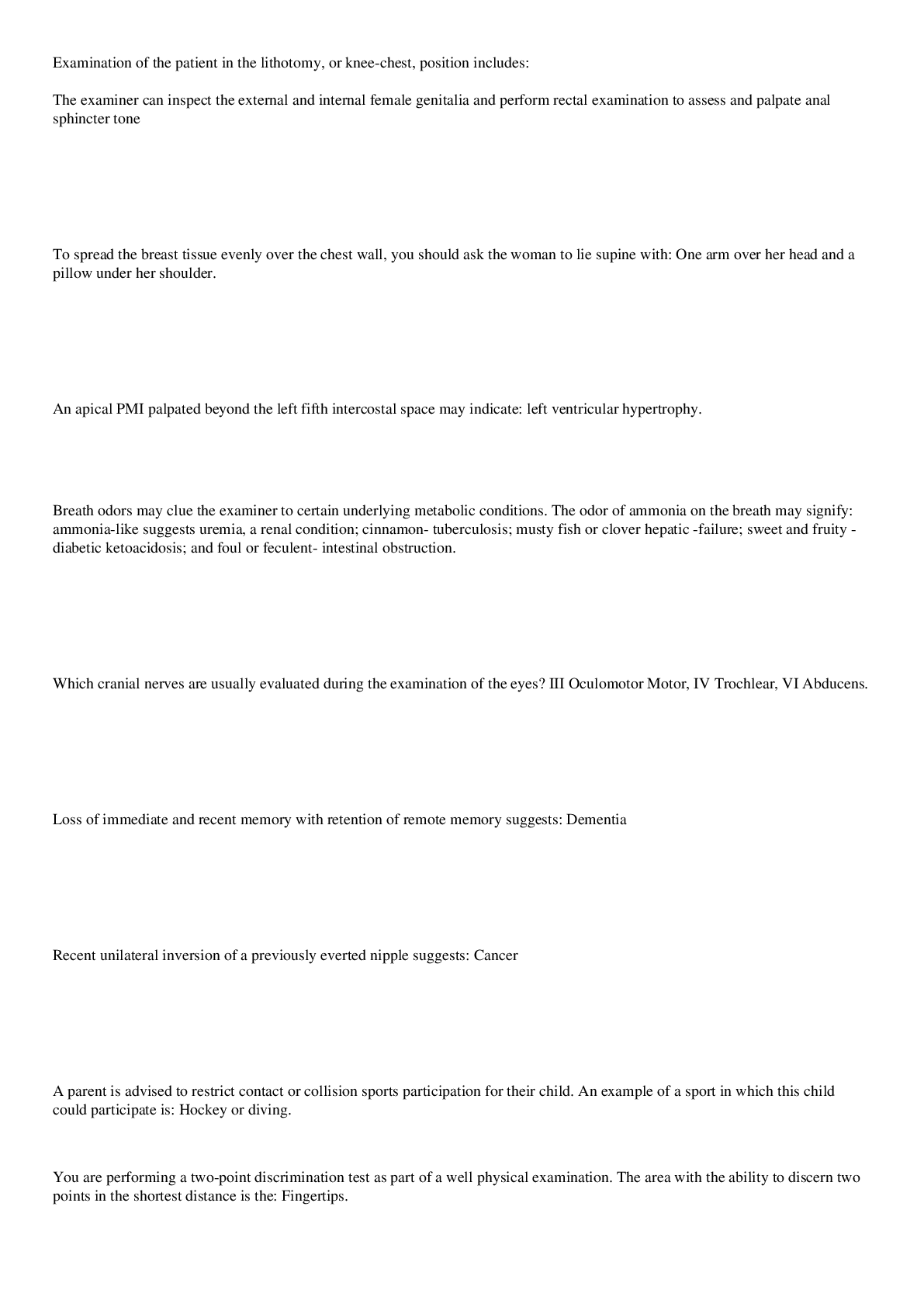
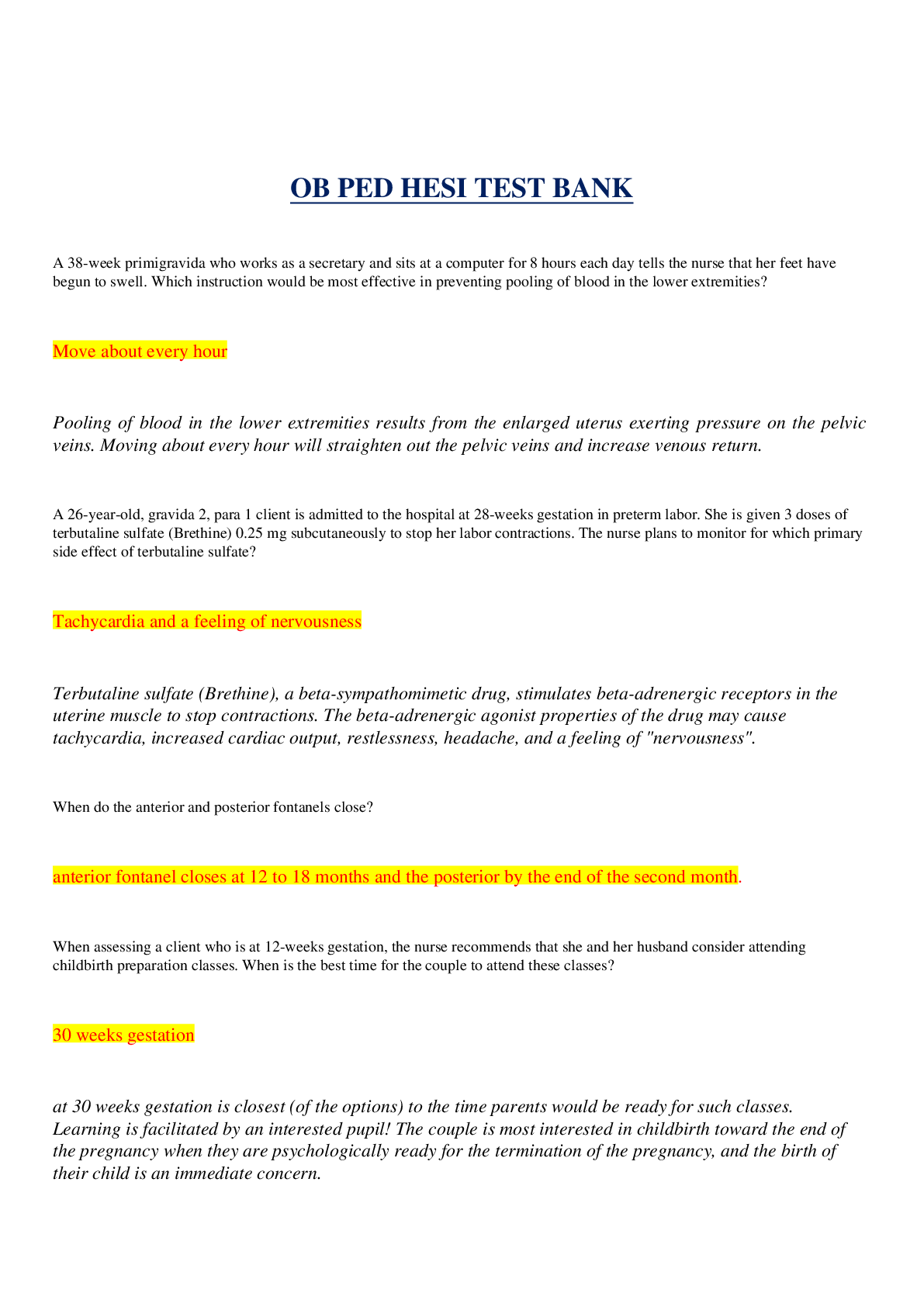




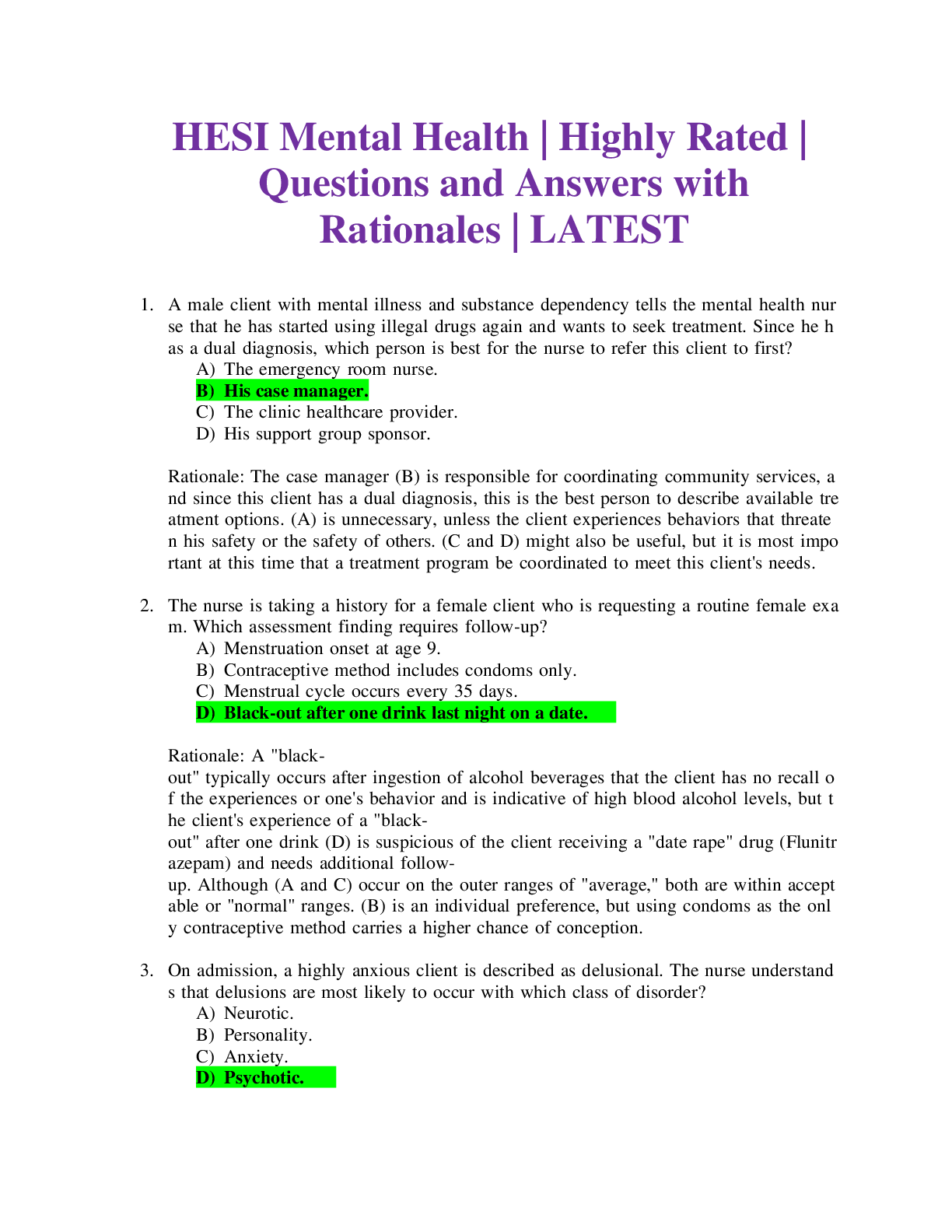


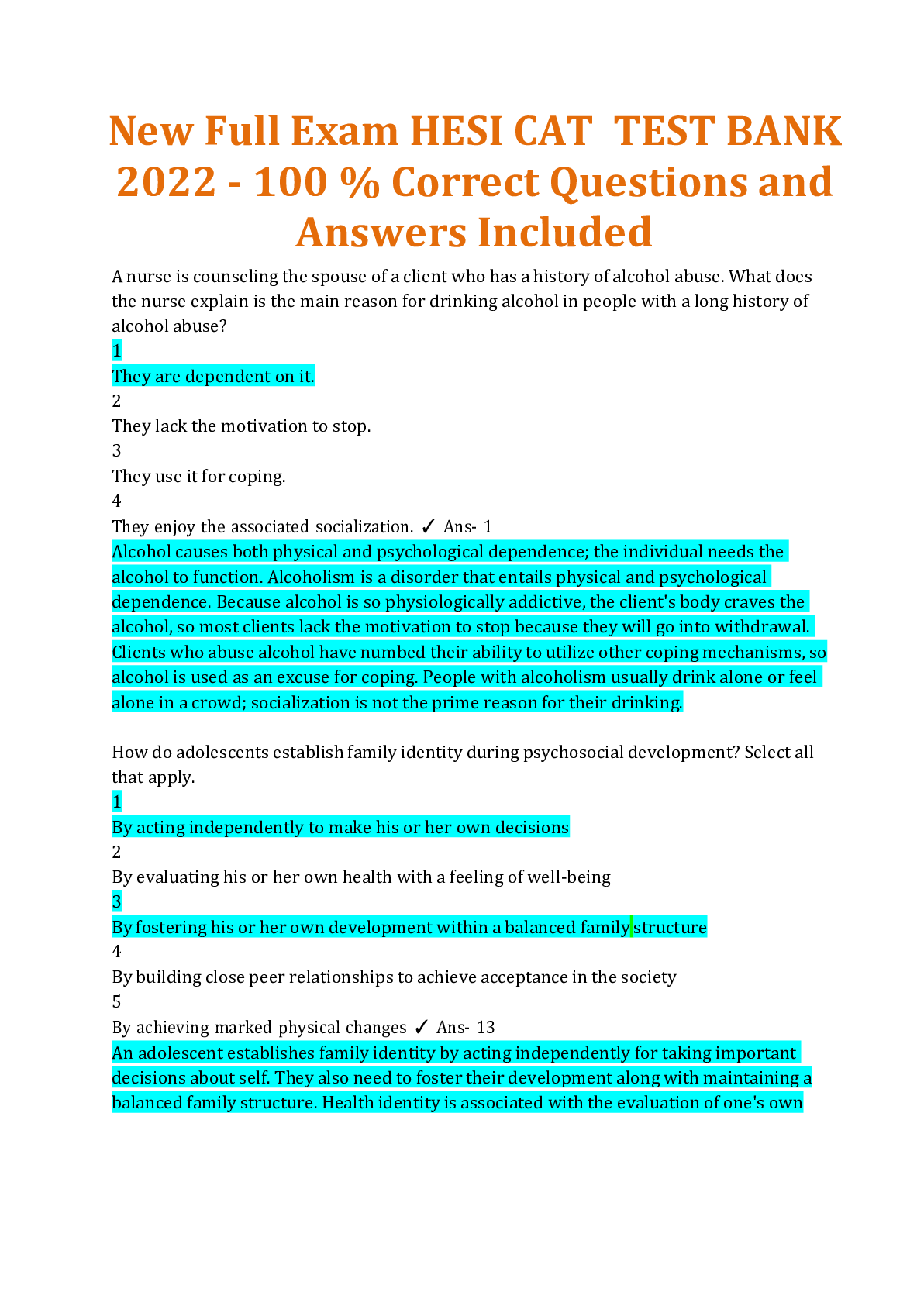


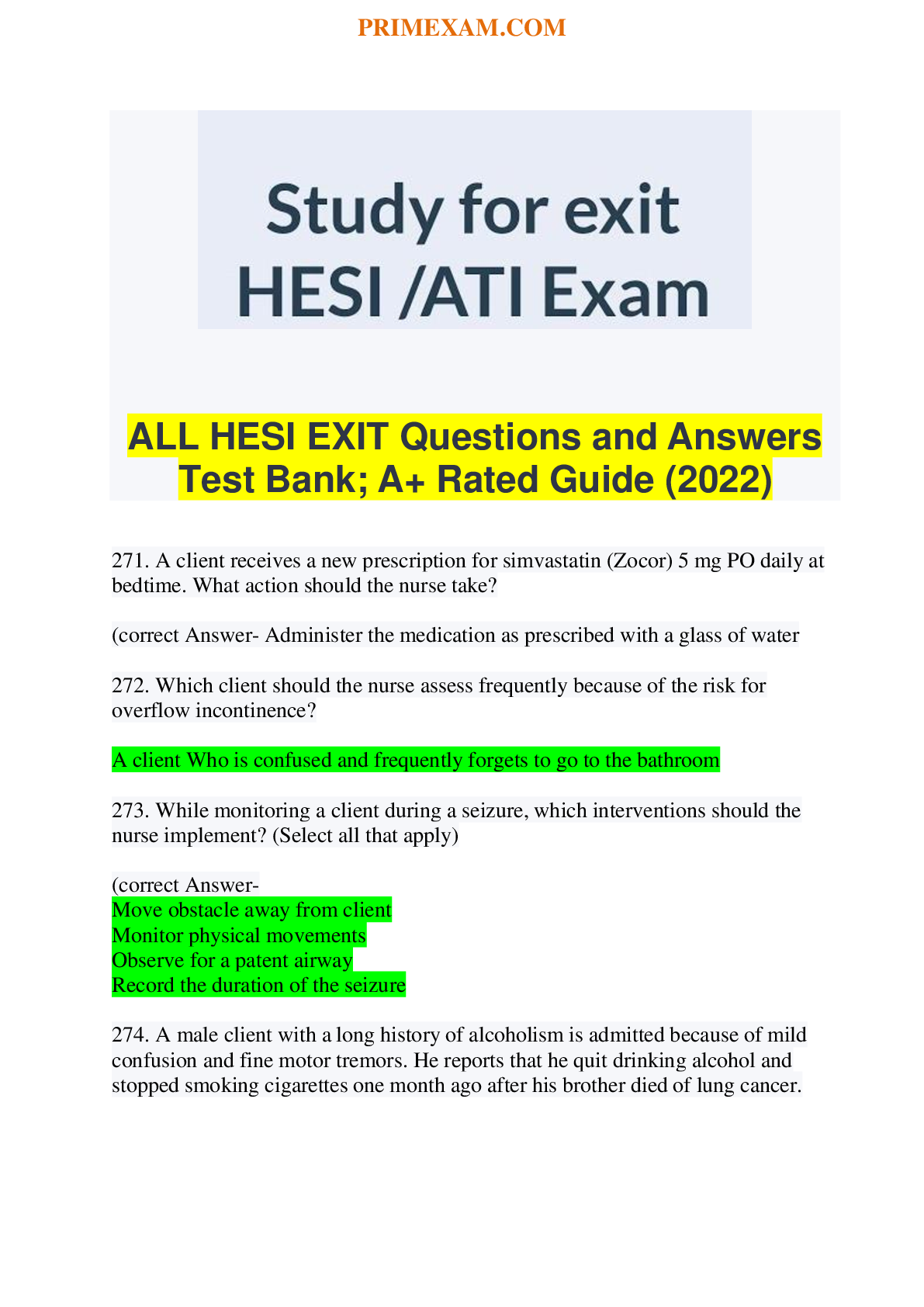
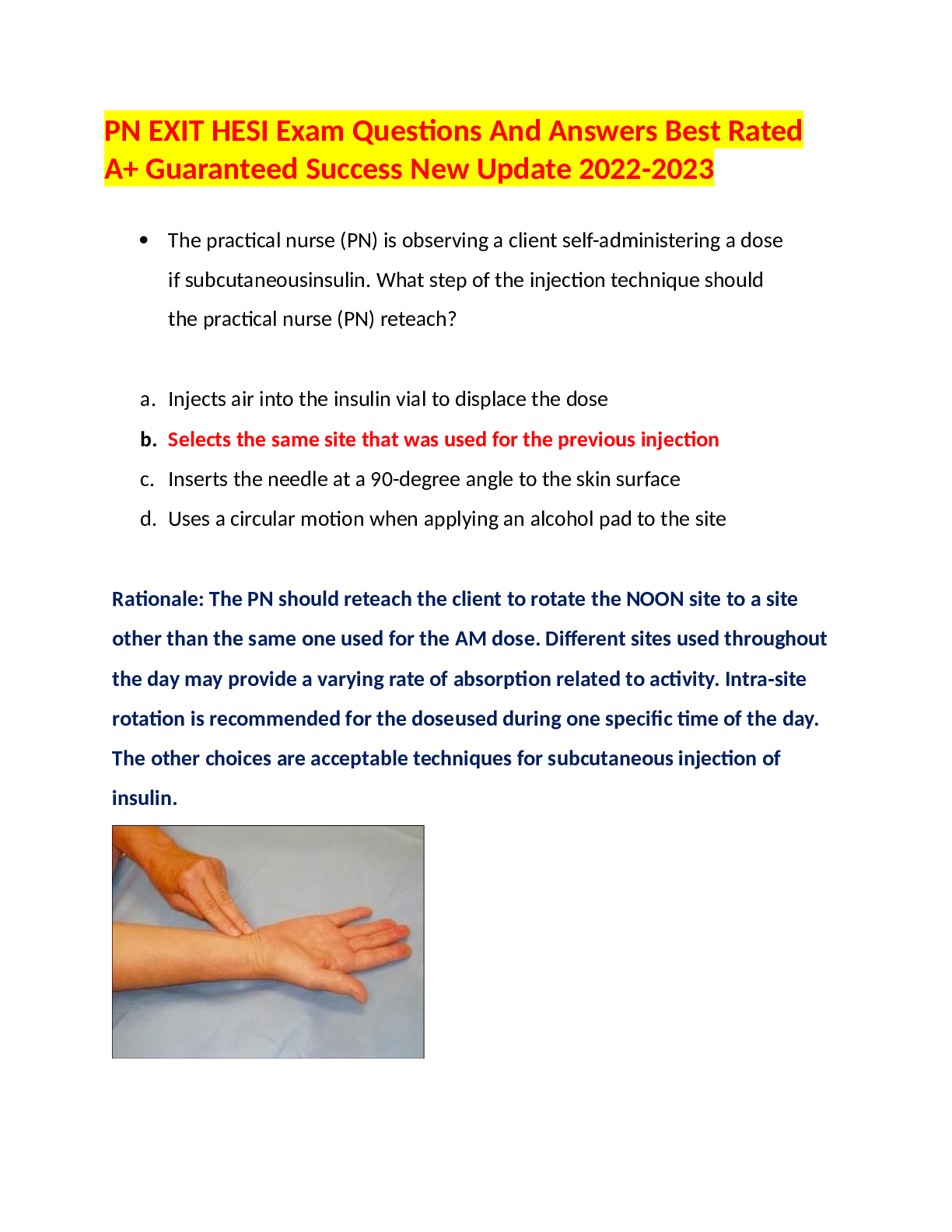
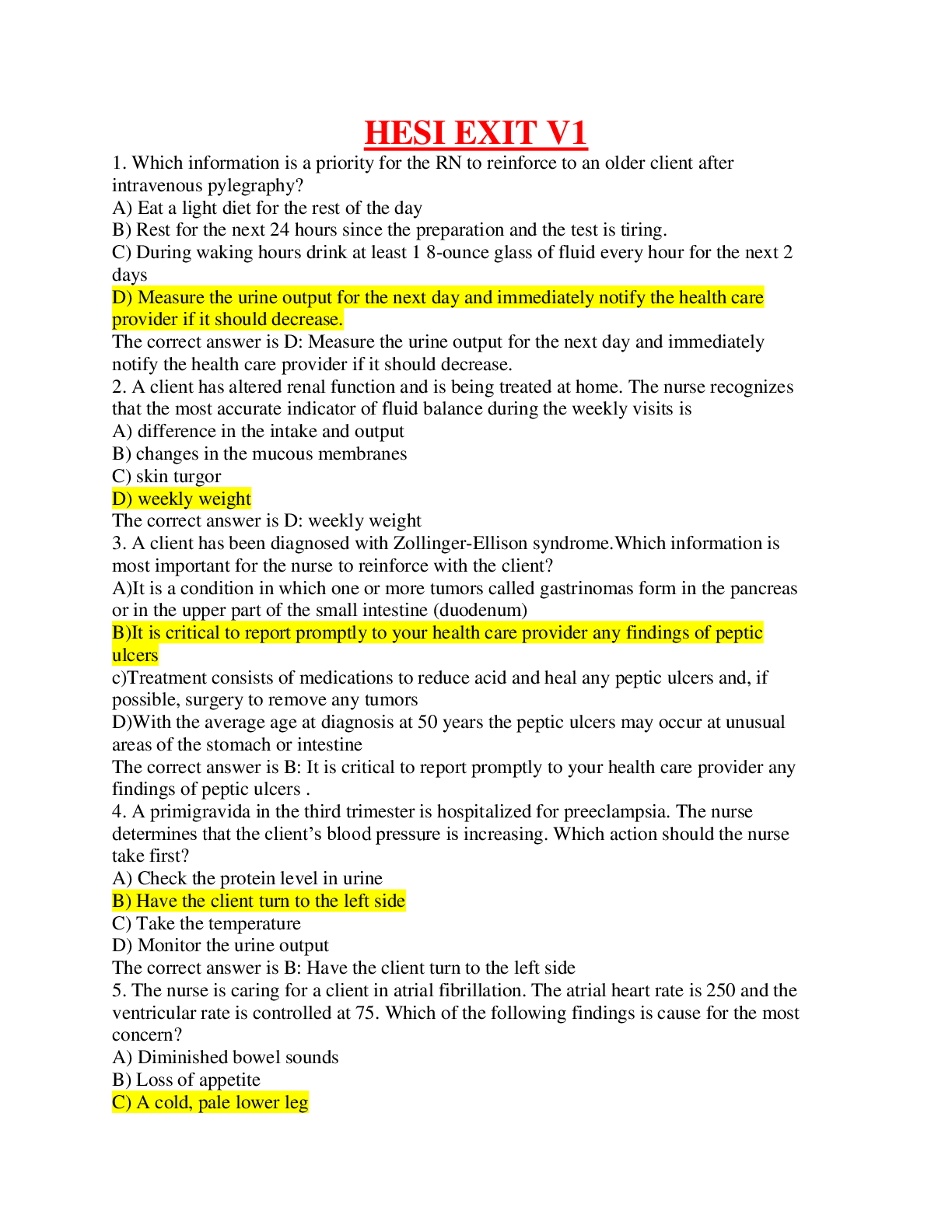

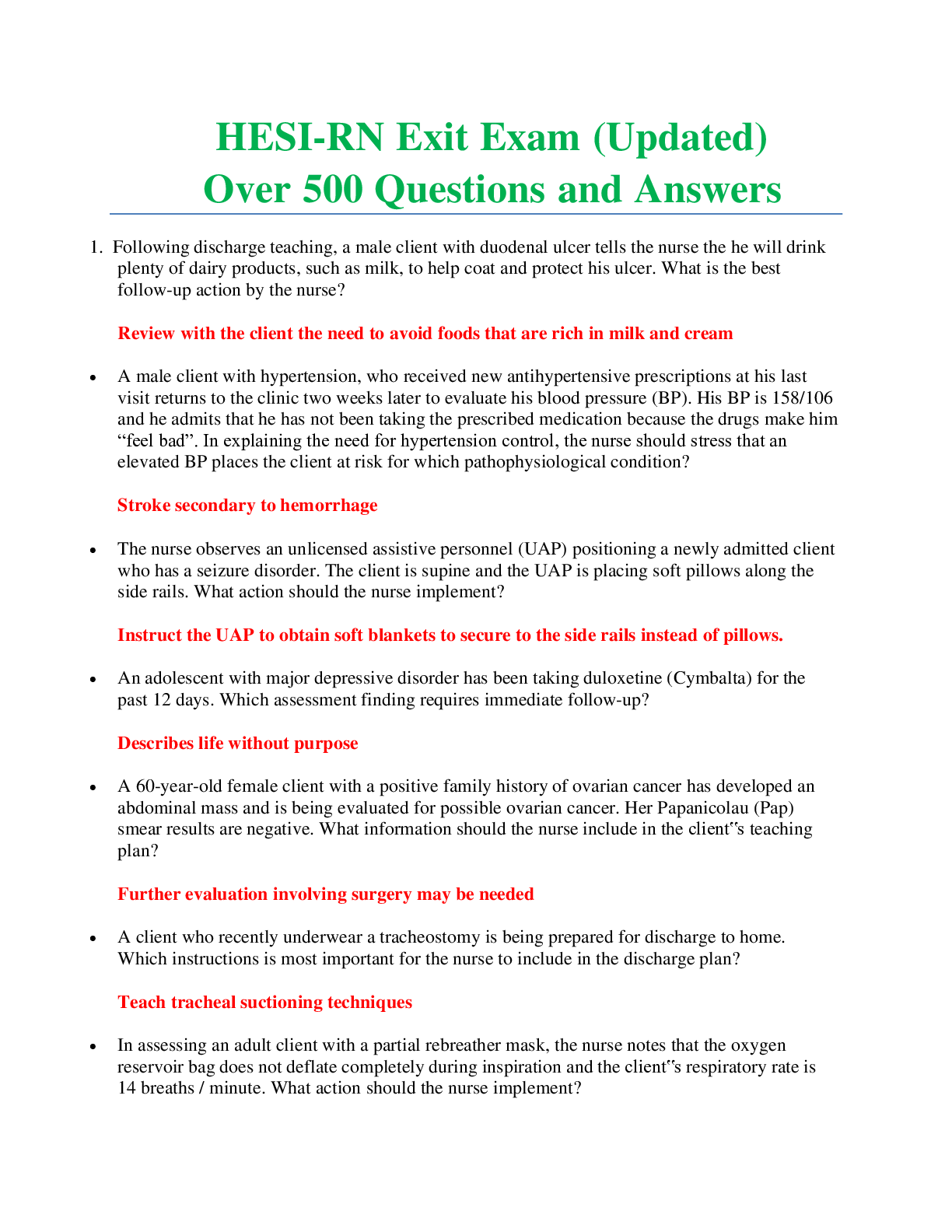
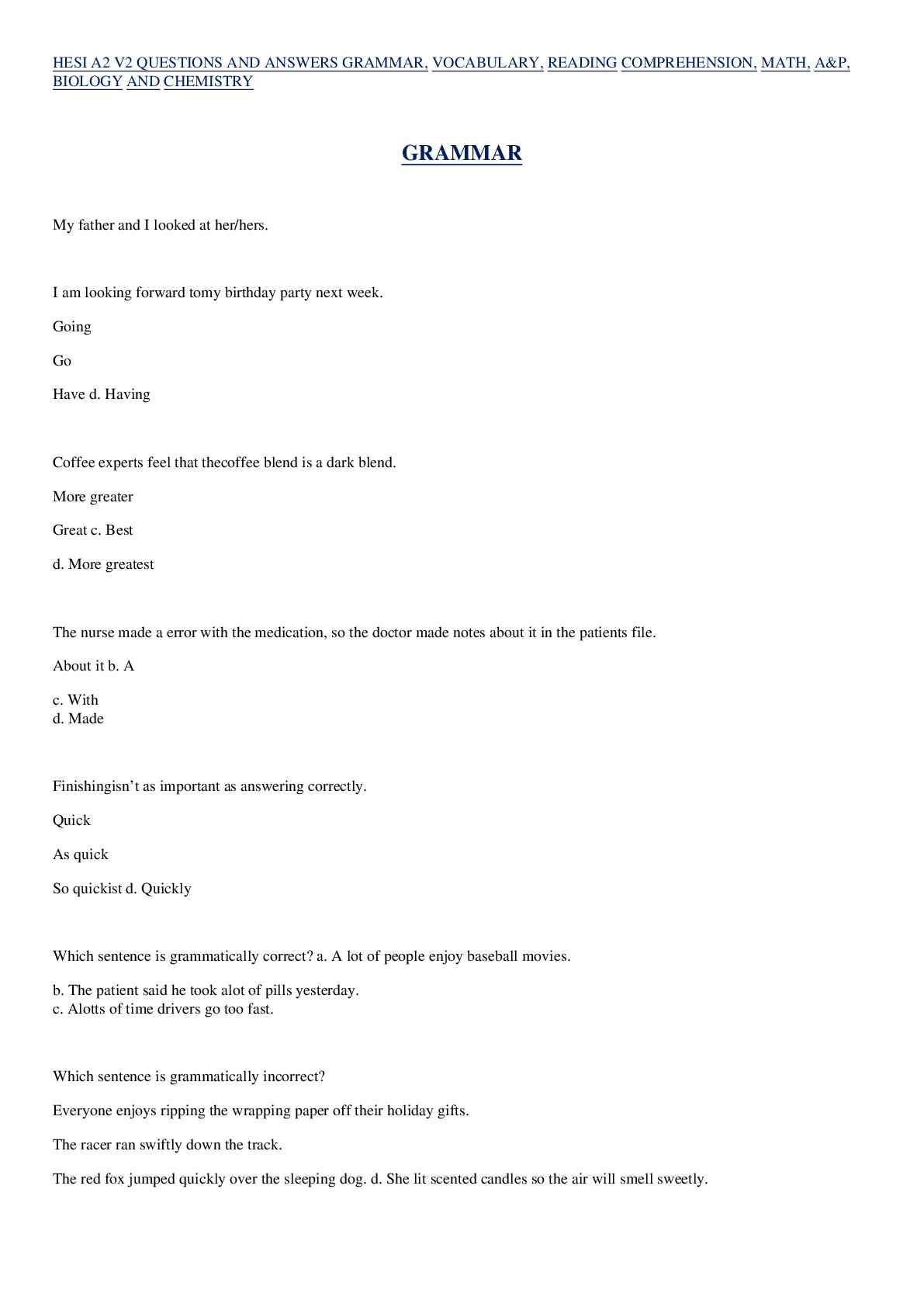

.png)
